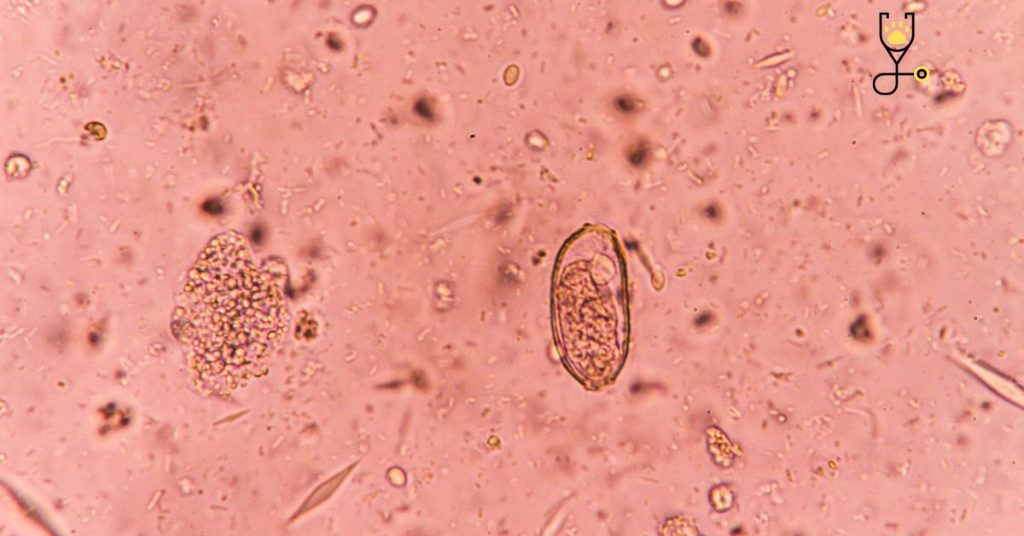EPM is a debilitating neurological disease caused by a protozoan parasite that affects horses. Horses can show many different signs of the disease, making it difficult to diagnose. There is no one-size-fits-all treatment for EPM, but early diagnosis and treatment are essential for the best outcome for the horse. In this blog post, we will discuss the symptoms, causes, and treatment of EPM in horses. Stay tuned for more exciting blog posts about horses!
What is equine protozoal Myeloencephalitis(EPM)?
Equine protozoal Myeloencephalitis (EPM) is a serious neurological disease caused by the Sarcocystis Neurona parasite. The disease affects the central nervous system of horses and can cause a wide range of neurological signs. The most common clinical signs of EPM include ataxia (incoordination), weakness, and paralysis. Horses with EPM may also show changes in behavior, such as depression, aggression, or anxiety.
EPM is a serious disease that can be debilitating and even fatal for horses. Early diagnosis and treatment are essential for the best outcome for the horse. There is no one-size-fits-all treatment for EPM, but a combination of medication and supportive care is often successful in treating the disease.
What are the symptoms of equine protozoal Myeloencephalitis?
There are many different symptoms of EPM, and they can vary depending on the stage of the disease. Early signs of EPM may be subtle and easily missed.

1. Ataxia (incoordination)
Ataxia is the most common clinical sign of EPM. Horses with EPM may appear to be uncoordinated and clumsy. They may stagger or fall when walking or trotting.
2. Weakness
Horses with EPM often seem weak and lethargic. They may have difficulty rising from a lying down position, or they may lie down more often than usual.
3. Paralysis
Paralysis is a serious symptom of EPM that can occur in affected horses. Paralysis may affect the horse’s ability to stand, walk, or even eat and drink. In some cases, paralysis can be fatal.
4. Behavioral changes
EPM can also cause behavioral changes in affected horses. Horses with EPM may become depressed, anxious, or aggressive.
5. Other signs
Other less common signs of EPM include head pressing, difficulty swallowing, and seizure activity.
What causes equine protozoal Myeloencephalitis?
1. Sarcocystis Neurona parasite: The Sarcocystis Neurona parasite is the cause of EPM. The parasite is found in opossums, which are the natural hosts for the parasite. Horses can become infected with the parasite when they eat contaminated food or water, or if they come into contact with an infected opossum.

2. Weakened immune system: A horse’s immune system may be weakened by stress, illness, or certain medications. This can make the horse more susceptible to infection with the Sarcocystis Neurona parasite.
3. Geographical location: EPM is more common in horses that live in certain geographical areas, such as the southeastern United States. This may be due to the presence of more opossums in these areas, or to other factors such as climate or soil type.
4. Age: Young horses are more likely to develop EPM than older horses.
5. Gender: Male horses are slightly more likely to develop EPM than female horses.
What are the treatment options for equine protozoal Myeloencephalitis?
There is no one-size-fits-all treatment for EPM, but a combination of medication and supportive care is often successful in treating the disease.
1. Medication: A variety of antiparasitic drugs can be used to treat EPM. The most common drugs used include ponazuril, diclazuril, and atovaquone. These drugs are typically given orally or intravenously.
2. Supportive care: Horses with EPM may require intensive supportive care during their illness. This may include ensuring that the horse has access to food and water, as well as providing nursing care and assistance with movement.
3. Surgery: In some cases, surgery may be necessary to remove damaged tissue caused by the disease.
4. Rehabilitation: After the acute phase of the disease has resolved, rehabilitation may be necessary to help the horse regain its strength and coordination.
5. Alternative therapies: Some owners may choose to use alternative therapies, such as acupuncture or chiropractic, in addition to traditional medical treatment.
Preventions of equine protozoal myeloencephalitis
There is no sure way to prevent EPM, but there are some steps that can be taken to reduce the risk of infection.
1. Vaccination: There is a vaccine available for horses that can help to protect against EPM. The vaccine is not 100% effective, but it may help to reduce the severity of the disease if a horse does become infected.
2. Good hygiene: Good hygiene practices can help to reduce the risk of infection with the Sarcocystis Neurona parasite. This includes washing hands after handling animals, and cleaning and disinfecting areas where animals have been kept.
3. Avoid contact with opossums: Opossums are the natural hosts for the Sarcocystis Neurona parasite. It is important to avoid contact with these animals, as they can infect horses with the parasite.
4. Quarantine: Horses that have been exposed to EPM should be quarantined from other horses to prevent the spread of the disease.
5. Early diagnosis and treatment: Early diagnosis and treatment of EPM is essential for the successful treatment of the disease. If you suspect that your horse has EPM, it is important to contact a veterinarian immediately.
Diagnosing equine protozoal myeloencephalitis
EPM can be a difficult disease to diagnose, as the signs can be similar to those of other diseases. A combination of clinical signs, laboratory testing, and imaging is often necessary to make a diagnosis.
1. Clinical signs: The most common clinical signs of EPM include ataxia, weakness, and paralysis. These signs may be present in any combination and can vary in severity from horse to horse.
2. Laboratory testing: A variety of laboratory tests can be used to help diagnose EPM. This includes tests for the presence of the Sarcocystis Neurona parasite in the horse’s body, as well as tests to look for changes in the horse’s blood or cerebrospinal fluid.
3. Imaging: Imaging tests, such as magnetic resonance imaging (MRI) or computed tomography (CT), can be used to look for changes in the horse’s brain or spinal cord. These changes can help to confirm a diagnosis of EPM.
4. Brain biopsy: In some cases, a brain biopsy may be necessary to confirm a diagnosis of EPM. This is a risky procedure, and should only be performed by a veterinarian experienced in performing this type of surgery.
5. Treatment: In some cases, the response of the horse to treatment can help to confirm a diagnosis of EPM. If the horse improves with treatment,
Prognosis Of Equine Protozoal Myeloencephalitis
The prognosis for horses with EPM varies depending on the severity of the disease. Many horses recover from mild to moderate cases of EPM with treatment. However, some horses may suffer from permanent neurological deficits, and a small number of horses may die from the disease. Early diagnosis and treatment of EPM are essential for the best possible outcome.
Conclusion
EPM is a serious disease that can cause neurological deficits in horses. Early diagnosis and treatment are essential for the best possible outcome. There is no sure way to prevent EPM, but there are some steps that can be taken to reduce the risk of infection. These include vaccination, good hygiene practices, and avoiding contact with opossums. If you suspect that your horse has EPM, it is important to contact a veterinarian immediately.
Frequently Asked Questions
1. What is equine protozoal Myeloencephalitis?
Equine protozoal Myeloencephalitis (EPM) is a disease that affects the nervous system of horses. The disease is caused by a single-celled parasite called Sarcocystis Neurona, which is found in the environment, particularly in areas where there are opossums.
2. How is EPM spread?
EPM is spread when a horse comes into contact with contaminated food or water, or when they come into contact with an infected animal, such as an opossum.
3. What are the signs of EPM?
The most common clinical signs of EPM include ataxia, weakness, and paralysis. These signs may be present in any combination and can vary in severity from horse to horse.
4. How is EPM diagnosed?
EPM can be a difficult disease to diagnose, as the signs can be similar to those of other diseases. A combination of clinical signs, laboratory testing, and imaging is often necessary to make a diagnosis.
5. What is the prognosis for horses with EPM?
The prognosis for horses with EPM varies depending on the severity of the disease. Many horses recover from mild to moderate cases of EPM with treatment. However, some horses may suffer from permanent neurological deficits, and a small number of horses may die from the disease. Early diagnosis and treatment of EPM is essential for the best possible outcome.
6. Can EPM be prevented?
There is no sure way to prevent EPM, but there are some steps that can be taken to reduce the risk of infection. These include vaccination, good hygiene practices, and avoiding contact with opossums.





